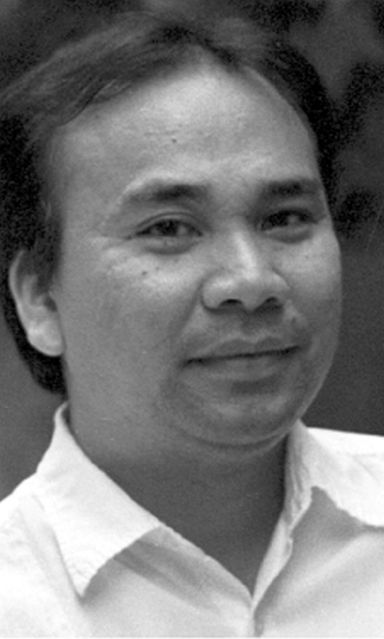
BERSALES
Very little is known about the Manila-based portraitist Severino Flavier Pablo (1800–1870), but his paintings live on. One of these, which he painted in the final years of his life, saw the light of day again last August 28, following an unveiling at the Grand Sala of the rectory or convent of the Basilica Minore del Santo Niño.
For decades, all anyone could see of it was that it was one huge religious painting occupying virtually an entire wall of the sala.
Decades of soot, dust, grime and the usual well-intentioned but ill-advised attempt at preservation and/or restoration had wrinkled and darkened it, almost as black as its huge carved black hardwood frame. One had to travel to the Augustinian Museum in Intramuros to see how it looked as a replica is found there.
Fortunately, in February this year, trained artists and conservationists of the National Historical Commission of the Philippines (NHCP) under division chief Larry Cruz, arrived to begin work on it as well as six smaller paintings located at the vestibule of the basilica. These latter six had been damaged in the aftermath of the 2013 earthquake.
The team was led by NHCP architect Rommel Aquino, who is undoubtedly the NHCP’s public (or more appropriately perhaps, social media) face in Cebu for the work behind the de-gilding of the Argao Church’s main altar “retablo.” This “retablo,” rendered in high baroque or rococo, had been tinkered with by a monsignor a decade back, covering with gold leaf even the centuries-old images contained in its also gilded niches, as if Midas had touched the entire ensemble.
Everyone thought — and was told — that removing the gold leafing would damage the centuries-old images irreparably. Well the NHCP team apparently mustered enough courage — and brains — to attempt what was thought impossible.
And so it comes as no surprise that the 49 Augustinian saints and martyrs painted on this humongous canvas by Severino Flavier Pablo in 1868, or some 149 years ago, finally came back to life, as it were, shining brightly once again.
Five months of cleaning, vacuuming and application of chemicals finally removed even the varnish applied on the painting’s surface. The adhesive that someone decades ago applied to “glue” the painting to its back, which adhered into the canvas itself and caused waves and crumples on its surface was carefully removed.
Paints that conservators use had to be imported from Spain for this and the six smaller paintings, jacking up the restoration cost to nearly P5 million, P2 million alone on the Flavier Pablo magnum opus.
Three other paintings, perhaps also by Flavier Pablo, are still as dark as this huge one was and could no longer be included in the current restoration.
One of these is a painting of the Virgin Mother, if my eyes could still be trusted, while one other is of the first bishop of Cebu, the Augustinian Pedro de Agurto, who took the throne in 1595. (I think I also saw other similar painting of the bishop outside the Museo Oriental of the Augustinian province in Valladolid, Spain, but this one at the Grand sala appears to be the original.)
Outside the Grand Sala, looking down one wall beside the intricately carved grand staircase of the rectory, is another huge painting, this time of the crucified Christ that also awaits similar conservation work.
But it will probably fall on the Augustinian friars led by their provincial superior, Fray Pacific Nohera, OSA, and Fray Ric Anthony Reyes, historian and archivist of the Basilica, to raise money for this gargantuan task ahead.
But the all-important step has been made, thanks to the NHCP.
A small set of four graphic panels on easels, now on display at the Grand Sala, explains the NHCP’s conservation work on the paintings. And while I would have loved to detail the many steps they took from the moment they documented the painting and took it down to the time they put it back on the wall again after five months, space will not permit me here.
My congratulations to NHCP for a job well done. Special thanks also to Archt. Veronica Dado, deputy executive director, for informing me ahead of time of this important historic unveiling of the once-faded painting. And thanks also to the Augustinian friars for allowing me a pre-unveiling peek.
Disclaimer: The comments uploaded on this site do not necessarily represent or reflect the views of management and owner of Cebudailynews. We reserve the right to exclude comments that we deem to be inconsistent with our editorial standards.
